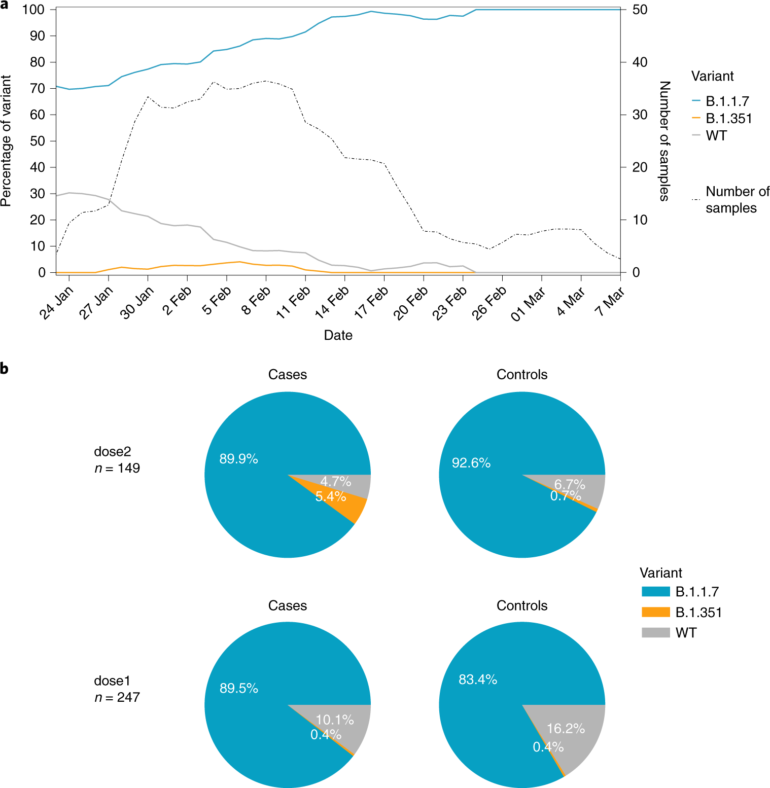A growing body of research has demonstrated that cost-effective high-renewable power systems are possible, but costs increase as systems approach 100% carbon-free electricity—what has become known as the “last 10% problem.”
The increase in costs is largely driven by a seasonal mismatch between the timing of variable renewable energy generation and demand. Meeting peak demand is challenging and expensive for all power systems, but addressing the seasonal mismatch issue for high-renewable power systems may require technologies that have yet to be deployed at a large scale. That makes their costs and requirements unclear.
To help move toward potential solutions for this challenge, a team of National Renewable Energy Laboratory (NREL) researchers studied trade-offs of six possible technology strategies to get from 90% to 100% carbon-free electricity in the United States. This work is published in a Joule article and can help inform decision-making today.
“None of the strategies are perfect, and a lot of uncertainty remains, but the study highlights key challenges with the last 10% and examines all the major technology options,” said Trieu Mai, NREL analyst and lead author of the study. “More research and development will be important to move closer to a clear solution for the last 10% and progress the United States toward a decarbonized power sector.”
What we know so far about the last 10% challenge
NREL has been studying a variety of questions related to achieving 100% renewable generation in the United States.
In a previous Joule article, NREL outlined the techno-economic challenges of achieving 100% renewables across all timescales. The study explored two types of challenges: one related to economically maintaining a balance of supply and demand and another challenge related to designing technically reliable and stable grids using largely inverter-based resources like wind and solar.
In a follow-on study, NREL used state-of-the-art modeling capabilities to understand possible pathways and system costs of transitioning to a 100% renewable power grid. Results, published in another Joule article, show that costs are significantly lower if there is a cost-effective source of firm capacity—resources that can provide energy during periods of lower wind and solar generation, extremely high demand, and unplanned events like transmission line outages. Other resources besides wind, solar, and diurnal storage or load flexibility could be important for overcoming the last few percent to a 100% renewable power grid.
In the Los Angeles 100% Renewable Energy Study (LA100), NREL used multiple models to examine which resources could be used to help meet the last 10% and maintain reliability for the city of Los Angeles. NREL also recently completed a landmark study on achieving 100% carbon-free electricity by 2035. The analysis shows there are multiple pathways to achieve the goal in which the environmental and societal benefits exceed the costs.
This latest Joule article builds on the NREL high-renewable-generation power grid studies by exploring trade-offs of potential technical solutions that could be implemented for the last few percent.
Six strategies for the last 10%
The ideal technology solution for the last 10% has three primary characteristics. First, the ideal solution has high capacity credit so that capacity is available during high-stress periods and can support resource adequacy—one of the “three Rs of power system reliability” that must be successful for a safe and reliable power system. Second, the ideal solution has relatively low capital costs because it will not be used often. And third, it relies on broadly available resources and can be deployed at scale. NREL surveyed six technology strategies that have the potential to meet the three primary characteristics.
1. Variable renewable energy, transmission, and diurnal storage
One possible strategy for achieving the last 10% relies on existing technologies that are currently being deployed. This strategy builds more variable renewable energy, transmission, and diurnal (less than about 24-hour) storage. In this option, variable renewable energy and transmission capacity are sized to meet demand during daily stressful periods on the grid, with storage filling hourly supply gaps and curtailing excess variable renewable energy (learn more about curtailment in an NREL explainer video).
This strategy could be more cost competitive if there is greater long-distance transmission to move high-value variable renewable energy to demand centers, and if wind and solar technologies continue to improve. However, this approach could be more difficult if wind and solar land use and site constraints increase over time—another topic NREL has been studying, including the recent release of a new comprehensive data set of local ordinances for siting wind and solar energy projects.
2. Other renewable energy
Another possible strategy for the last 10% uses geothermal, hydropower, and biomass—technologies that could all play important roles in a zero-emissions power sector. These technologies do not rely on variable solar and wind resources and can potentially overcome the seasonal mismatch. However, resource availability, especially at locations with high electricity demand, might narrow their utilization to select regions only. These resources also have relatively high capital costs that might be economically challenging as a last 10% strategy.
Biomass-based generation could be another option to produce renewable electricity for the last 10%. This option has relatively low capital cost, but there are uncertainties and constraints on a steady and sustainable feedstock supply and the cost of biomass conversion.
3. Nuclear and fossil with carbon capture
Nuclear and fossil fuel with carbon capture and storage (CCS) are widely cited as potentially important resources in a decarbonized electricity system because they are often reliably counted on throughout the year. Fossil CCS plants have not yet been deployed at scale, but some studies find significant deployment potential.
However, this strategy comes with challenges: limited recent deployment, cost uncertainties, and environmental and security considerations—and the high capital cost for low utilization could create economic barriers.
4. Seasonal storage
Seasonal storage refers to using electricity to produce a storable fuel that can be used for generation over extended periods of time, even up to entire seasons of the year. Hydrogen or other hydrogen-derived fuels are currently the most promising options for seasonal storage. Converting hydrogen to electricity can be done using fuel cells or combustion technologies, which are being converted for hydrogen. These electricity generation options fueled by hydrogen could have low capital costs in the future and be viable as last 10% strategies. Key uncertainties with this strategy include the availability of the fuel (hydrogen) supply and delivery infrastructure.
5. Carbon dioxide removal
Carbon dioxide removal technologies can offset emissions from carbon-emitting power generation technologies by drawing down atmospheric carbon. This last 10% strategy is unique because it leverages other generation assets to support resource adequacy on the grid.
While there is unique value with carbon dioxide removal technologies, this last 10% option has deployment challenges. Very little carbon dioxide removal has been deployed yet worldwide, and future technology costs remain uncertain.
6. Demand-side resources
Demand-side resources, also called demand response or demand flexibility, are a unique last 10% solution compared to the other five strategies studied.
Demand-side resources reduce electricity consumption during times of system stress and help avoid investments in new peaking capacity. Through flexible scheduling or interruption of electricity consumption, they can also reduce operating costs or be used for important grid-reliability services. Capital costs for demand-side controls and communications equipment can be low, and direct operating costs are modest.
However, applying demand-side options as a last 10% strategy requires the resources to be reliably available over extended multiday periods. The scale of response needed on days of extreme events could exceed the demand-response potential, and flexibility from new electrified loads is uncertain.
“Given current technology costs and readiness, significant emissions reductions can occur through accelerated deployment of wind, solar, diurnal storage, transmission, and other renewable energy technologies,” said Paul Denholm, NREL analyst and co-author of the study. “Other technologies could also play a big role if they become cost competitive and widely available. We will continue to study these possible solutions, but for now, the pathway to about 90% carbon-free electricity is increasingly clear. After all, getting to 100% requires first achieving 90%.”
More information:
Trieu Mai et al, Getting to 100%: Six strategies for the challenging last 10%, Joule (2022). DOI: 10.1016/j.joule.2022.08.004
Provided by
National Renewable Energy Laboratory
Citation:
On the road to 100% clean electricity: Six potential strategies to break through the last 10% (2022, September 13)



